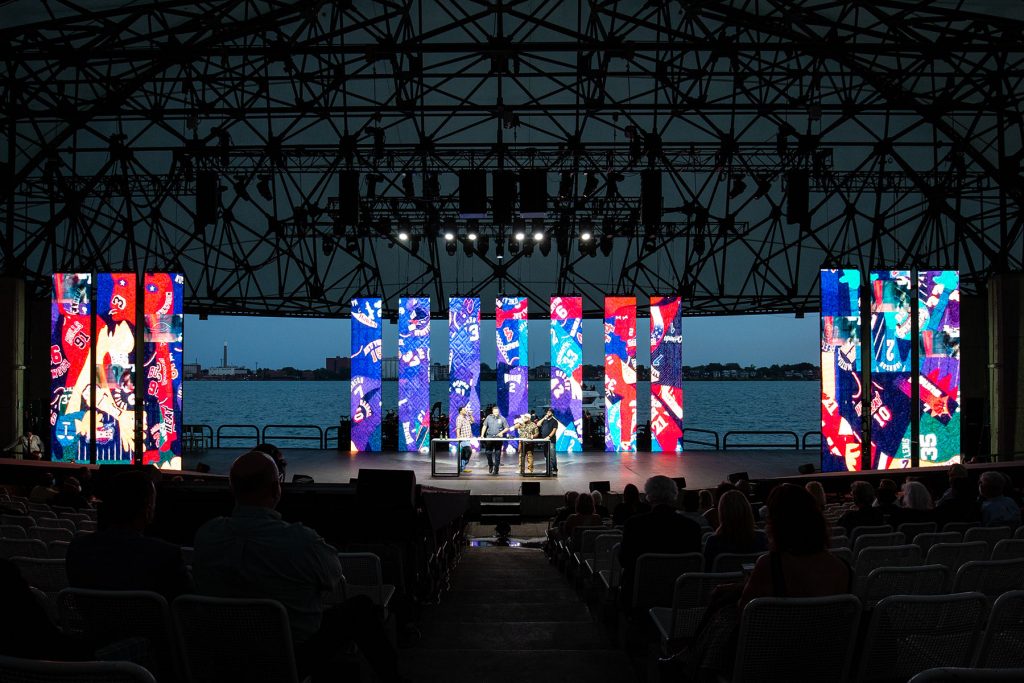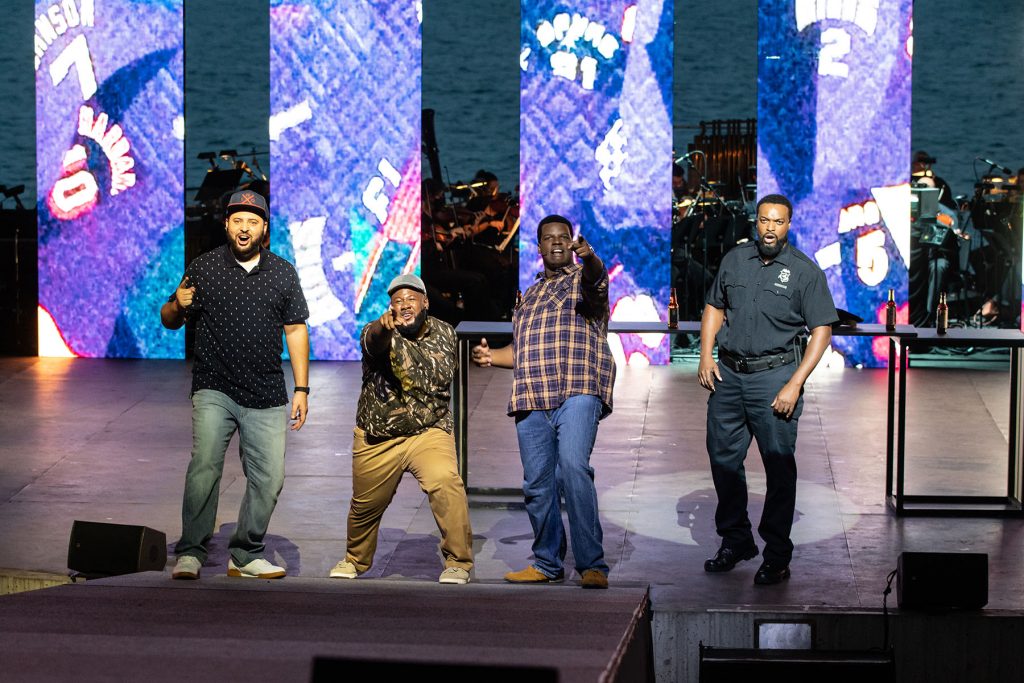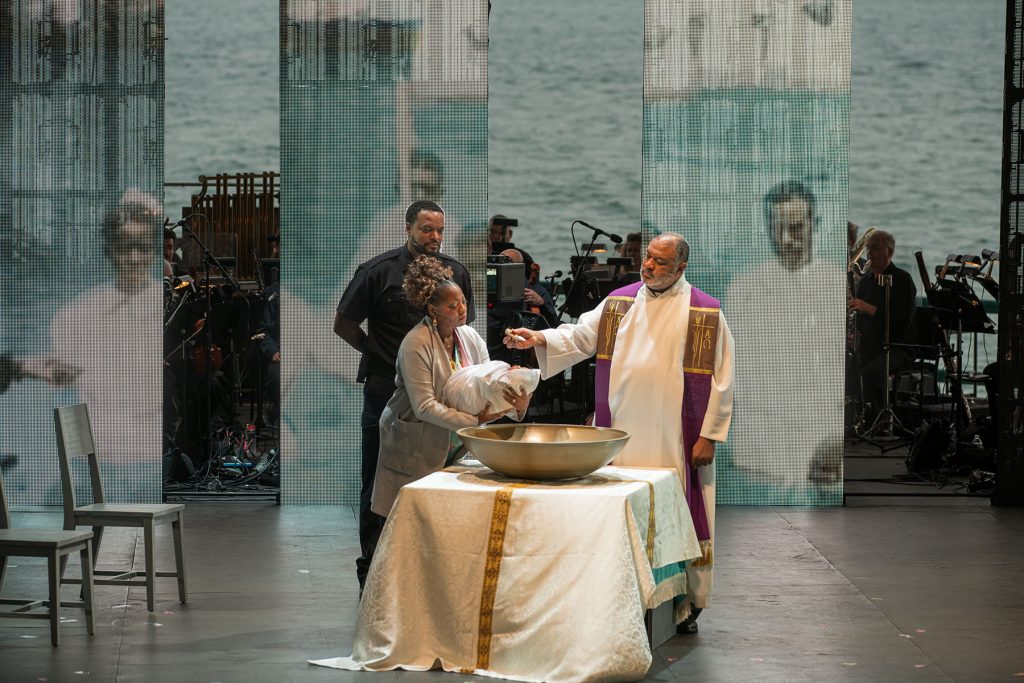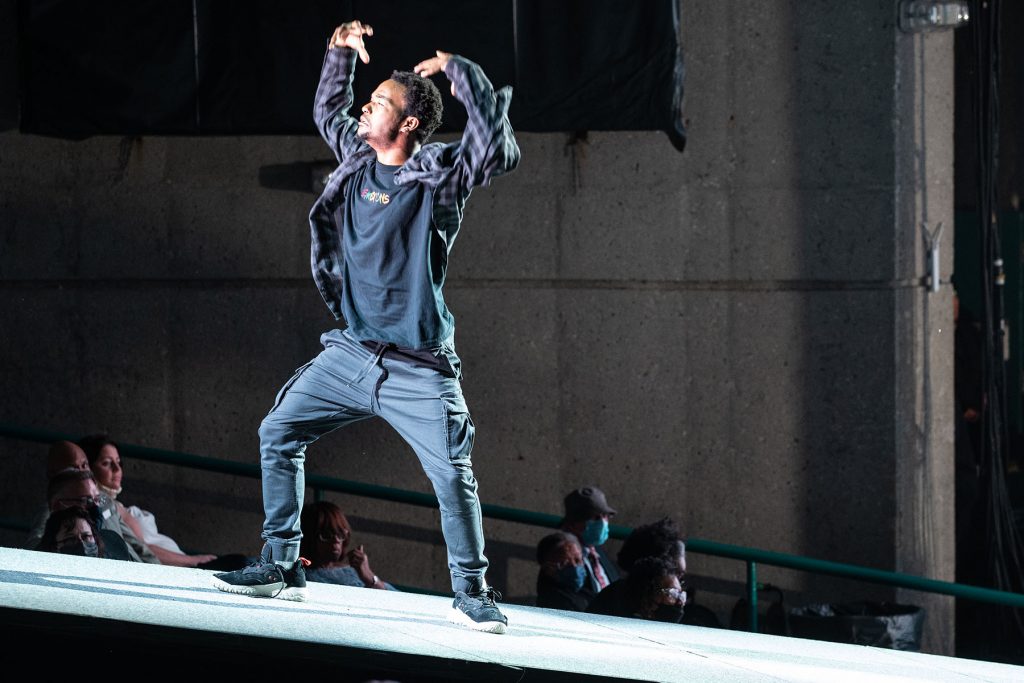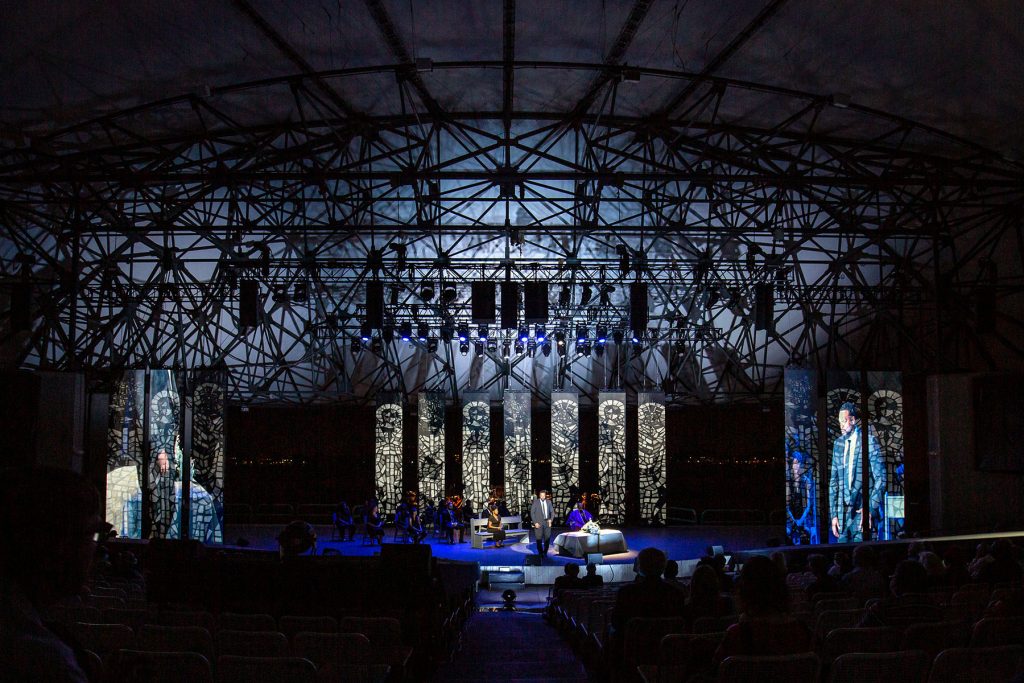Michigan Opera Theatre’s Blue Breaks Through to Audiences with L-Acoustics L-ISA Immersive Sound Michigan Opera Theatre’s Blue Breaks Through to Audiences with L-Acoustics...
Staged at Detroit’s Aretha Franklin Amphitheatre, this contemporary opera production benefited from L-ISA Immersive Hyperreal Sound’s ability to keep the sound linked to the actors, deepening their connection with the audience
DETROIT, Michigan – December 2021 – While the COVID pandemic compelled performing arts companies to stretch their horizons to reach audiences, Michigan Opera Theatre went further than many during the period; for instance, presenting programs in the Detroit Opera House parking garage, among other nontraditional venues for opera.
Then, for one weekend in September, Blue, a contemporary American opera by Jeanine Tesori and Tazewell Thompson, was staged at the city’s open-air Aretha Franklin Amphitheatre, a mostly pop-music venue where recent shows included performances by Chaka Khan, Machine Gun Kelly, Erykah Badu, and UB40.
Awarded Best New Opera of 2020 by the Music Critics Association of North America, Blue is about a young Black couple raising a son in modern-day Harlem and their struggles with police brutality. With its all-black cast, the opera is a celebration, tragedy, and timely and highly relevant work. And while the Aretha Franklin Amphitheatre isn’t often home to the opera genre, what helped tie it all together, creating an immersive and engaging environment for performers and patrons alike, was the production’s implementation of L-Acoustics L-ISA Immersive Hyperreal Sound technology.
A meld of opera and musical theatre, this presentation of Blue sought to connect with audiences at a higher level. “When I was thinking about sound for this piece, I was thinking, how do we maintain the intimacy of the story and still convey the sweeping arc of big ideas? Like confronting God, the state, history, and violence?” posited Director Kaneza Schaal, who worked closely with Michigan Opera Theatre’s Gary L. Wasserman Artistic Director Yuval Sharon.
“This piece was made to be performed in a traditional opera space, but here at the open-air Aretha Franklin Amphitheatre, it’s a very different proposition. So, it was essential to bring on collaborators who could help us represent both the intimacy and the sweeping grandness of this story. The collaboration with L-Acoustics is the backbone of what made this possible. What L-ISA technology did was allow us to have a more embodied experience between the stage and the audience.”
Sharon agrees: “Opera is typically performed in acoustically-optimized venues requiring no amplification, truly demonstrating the beauty and full range of the human voice, from barely a whisper to the loudest possible utterance,” he says. “To recreate that on a stage like the Aretha Franklin Amphitheatre was an enormous challenge because we wanted to make sure it didn’t just feel like a rock and roll show, where everything is loud and forward. We still wanted our audience to experience nuance and subtlety, as well as to get a sense of the sound creating space.
“Having the sound travel and follow the singers was a crucial benefit of using L-ISA technology for Blue. With it, the ears of our audience members helped direct their eyes to where the singers were on stage, the very same way it would happen in an opera house. It was a subtle effect, but without it, there would be so much that was lost from the experience. L-ISA really helped ensure that the depth and full spectrum of what this piece is about were able to be best communicated to the audience.”
With Livonia-based Thunder Audio supplying most of the audio reinforcement gear, the full 17.1 surround sound configuration for Blue comprised seven arrays of eight L-Acoustics Kiva II each flown across the stage, plus ten Syva enclosures as surrounds. These were complemented by seven X8 coaxials spread across the stage lip for frontfill, plus four KS21 subs for low-end impact. The system was designed and implemented using the L-Acoustics L-ISA Processor and controlled on the show’s DiGiCo SD10 FOH console via a DeskLink connection.
The arrays themselves were positioned using L-Acoustics Soundvision predictive software to set the acoustical stage and avoid intelligibility-damaging reflections. “One of the big challenges was working in a covered outdoor arena versus a more controlled environment like an opera house,” explains L-Acoustics Applications Engineer Jordan Tani, who collaborated with both Carlos Mosquera and Marcus Ross, also of L-Acoustics, on the system design, setup, and operation.
“There are a lot of reflections in this venue, and Soundvision can accurately predict what’s going to happen in the space. We were able to establish the acoustics geometry for the audience perspective and to make sure that we had the proper coverage for the entire venue,” Tani continues.
Blue FOH Engineer Stephanie Farina confirmed the venue is highly reflective, “Carpenters were loading in, and they hit something with a hammer, and we heard it echo three times. That’s a challenge for any system, but especially for opera or musical theatre, where it’s all about intelligibility and clarity,” she explains. “The audience needs to be able to clearly hear the story to understand the performance.”
Farina found that while mixing with L-ISA, the combination of a well-deployed speaker system and the ability to connect speech to individual actors as they moved about the stage was artistically and technically transformative. “What is neat about L-ISA is that because it’s localizing the voices, we’re able to push the system a little less, which causes fewer reflections and, in turn, gives us that needed intelligibility and clarity. The audience is right there with the actors,” she says.
“And what L-ISA did for the music—a masterful score by lauded theatrical composer Jeanine Tesori and conducted by Daniela Candelari—was just as amazing,” she adds. “We had a 30-piece orchestra jammed into a 20-by-20-foot space, and L-ISA was actually able to widen them out and make them sound so much larger than they were, all the way to the back of a 6,000-seat venue.”
Tani adds, “There’s definitely a lot of value in utilizing immersive audio for powerful operatic storytelling and art. To be able to give space for both the orchestra and the singers,” he observes. “It allows the music to really breathe. That’s the value of L-ISA: it takes a work of art that’s deeply intimate and very emotional, bringing it fully to life in three-dimension.”
A video on the project can be viewed here: www.youtube.com/watch?v=szxiBkKSRlo
For details on Michigan Opera Theatre’s Blue, visit www.michiganopera.org. Thunder Audio can be found online at www.thunderaudioinc.com.
